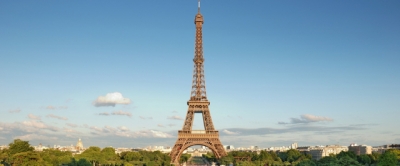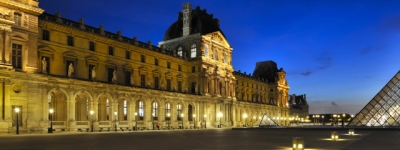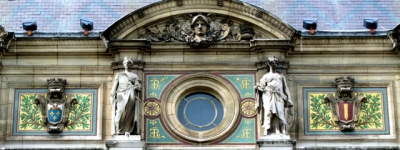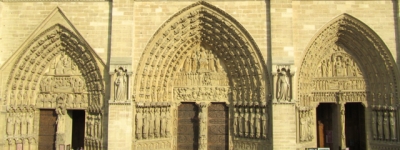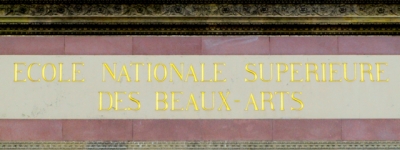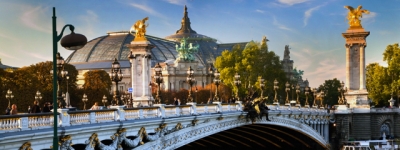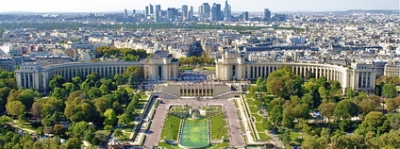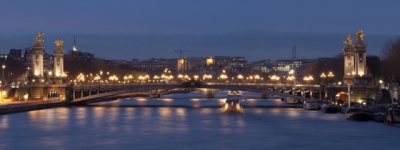The Eiffel Tower and the surrounding area
The Eiffel Tower
Symbol of Paris and France, the structure called The Iron Lady is named after its designer and architect Gustave Eiffel. Built in 1887 as the flagship of the World’s Fair of 1889, its destiny was to be temporary, but 120 years later, it still dominates Paris and is the global symbol of Parisian romance. Visitors from around the world come to be photographed during day and especially at night, when the tower shines with 1,000 sparkling lights.
Its completion was an unusual technical challenge, erected in just over two years, and represents the pinnacle of metal architecture of the industrial era. Endless source of inspiration for artists, it remains the most visited paid monument in the world. The bust of Gustave Eiffel, sculpted by Bourdelle in 1929, is located at the foot of the north pier.
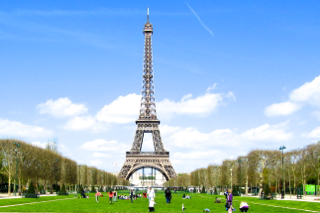
La Tour Eiffel
Parc du Champs de Mars, 75007 Paris
Website - tel : 08 92 70 12 39
Metro station: Bir Hakeim
Price : Second landing via stairway: €10.20/ 12 to 24 years old: €5.10 / 4 to 11 years old: €2.50. Free for children under 4 years old.
Second landing via elevator: €16.30 / 12 to 24 years old: €8.10 / 4 to 11 years old: €4.10. Free for children under 4 years old.
Ticket to the summit: €19.40 / 12 to 24 years old: €9.70 / 4 to 11 years old: €4.90. Free for children under 4 years old.
Open daily.
July and August: 9 a.m. to 0:45 a.m.
The rest of the year: 9:30 a.m. to 11:45 p.m.
A certified ‘‘Tourism and Handicap’’ location. Second landing is accessible for people with reduced mobility. For people with a hearing impairment, magnetic loop amplifiers are available at the ticket counter.
The Eiffel Tower by the numbers
Height : 324 meters (including the antenna)
Weight : 7,300 tons of structural steel, 10,000 tons total
Lighting : 336 projectors
Number of steps up to the top : 1,665
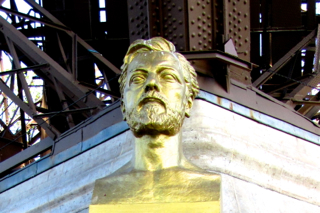
Gustave Eiffel
Gustave Eiffel was born in 1832 in Dijon. Engineer by vocation, Eiffel founded a company specializing in structural steel in 1864. The Tower would be his crowning achievement, marking the culmination of his career and revealing his creative genius. However, Gustave Eiffel left his mark on other prominent and spectacular structures around the world, among them the metal structure of the Statue of Liberty in New York, the Porto Viaduct in Portugal, the Pest train station in Hungary or the dome of the Nice Observatory. He devoted the last years of his life to experimental research activities before dying in 1923.
Visit the Eiffel Tower
Two options are available for visiting the monument. It is possible to climb the 704 steps up to the second landing, which allows for a closer look at the metal structure. If you’re not feeling up to the challenge, elevators are available to transport you to the different landings.
On each landing there are many dining options: from snacks to the gourmet restaurant "Le Jules Verne" (see box "Sleeping / Eating”).
1st landing : museum retracing the history of the tower, cultural path, video show, glass floor. "Gus" Tour. Restaurant and shop.
2nd landing : spectacular views of Paris. Restaurant "Jules Verne".
3rd landing : Reconstruction of Gustave Eiffel’s office. Champagne Bar. Magnificent and gripping panorama of the entire city, especially at night.
Family
To learn about the history and the mysteries of the Eiffel Tower in a playful way, follow Gus, the tower mascot, along an educational tour full of inquiries and questions for children 6 to10 years old. Activity and guidebook available at Cineiffel on the 1st landing or you can download it on the Eiffel Tower Website.
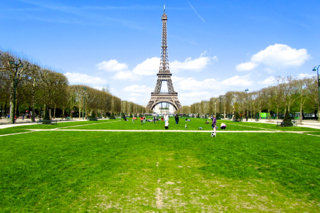
Champ de Mars Park
Metro : Bir Hakeim.
The Champ de Mars, named after the Roman god of war, was installed in 1780, and evokes the military function of the plaza that once served as an exercise field for the cadets of the Military Academy. The park is decorated with lakes and ponds, and many birds have since taken up residence (including the tawny owl). Visitors will also appreciate the beautiful view of the Eiffel Tower.
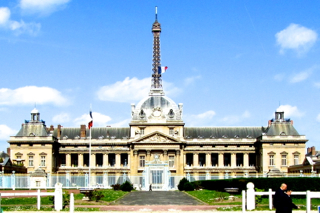
Military Academy (closed to visitors)
1 Place Joffre, 75007 Paris
Metro station: Ecole Militaire
Louis XV founded the institution in 1748 in this imposing building. The school shaped the future officers of the royal army, including a certain Napoleon Bonaparte. Since its creation to today, its function has remained the same.
In the surrounding area
UNESCO Headquarters
The Invalides
The Invalides complex
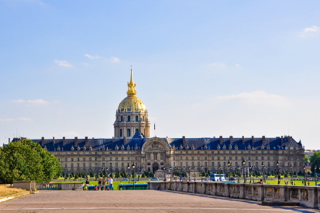
Promenade of the Invalides
Avenue du Maréchal Gallieni, 75007 Paris
Metro station: Invalides
Between the Pont Alexander III and the Hôtel des Invalides, this promenade surrounded by lime trees offers magnificent views of some of the most beautiful monuments of Paris. It was conceived in the early 17th century to serve as a garden for disabled veterans who were nearby residents.
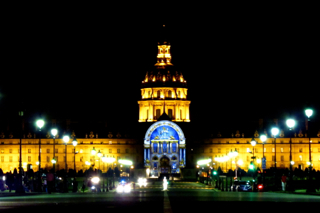
Hôtel des Invalides (Hotel of the Invalides)
Esplanade des Invalides, 75007 Paris
Website - 08 10 11 33 99.
Metro : La Tour-Maubourg, Varenne, Invalides.
Open daily. 7:30 a.m. to 7 p.m.
The construction of the Hotel des Invalides was in response to a request by Louis XIV, who wanted a place dedicated to disabled veterans and retired military members, a first in Europe. Consisting of a hospital, barracks, a church and supplemented by the Dome Church in 1706, it could hold up to 4,000 residents at the time.
Musée des Plans-reliefs (Museum of Relief Maps)
6 Boulevard des Invalides, 75007 Paris
 - tel : 01 45 51 95 05.
- tel : 01 45 51 95 05.
Metro station: La Tour-Maubourg
Full price/ reduced price : €12/ €10. Free for EU citizens under 26 years old (free for non-EU citizens under 18 years old)
A single ticket allows access to the Army Museum, the Church of the Dome (tomb of Napoleon I), the Museum of Relief Maps and the Museum of the Order of the Liberation.
Open daily.
April through September : 10 a.m. to 6 p.m. ;
October through March : 10 a.m. to 5 p.m.
Lecture tours available.
Many activities for children. Model workshops and discovery tours are offered during holidays for children 8 years old and up. Information and reservations, tel : 01 45 51 92 45. Price: €7 per child.
The Museum of Relief Maps presents a unique collection: historical models of fortified towns and the surrounding countryside, carried out between the reigns of Louis XIV and Napoleon III, from the 17th to the 19th century. Their function was primarily a strategic and informative one, just as today one would look at a map. The biggest battles are well presented. Through the different maps, visitors can view and understand the history of Paris and its urbanization over the centuries.
Each of the 28 models presented demonstrates a surprising realism and a meticulous attention to detail. They are indeed unique universal masterpieces.
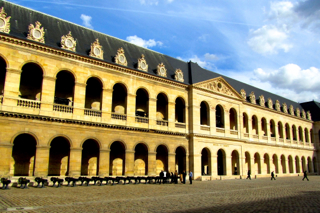
Musée de l'Armée (Army Museum)
Hôtel des Invalides,
129 rue de Grenelle, 75007 Paris
Website - tel: 08 10 11 33 99
Full price / reduced price: €12 / €10. Free for EU citizens under 26 years old (free for non-EU citizens under 18 years old)
A single ticket allows access to the Army Museum, the Church of the Dome (tomb of Napoleon I), the Charles de Gaulle Historic Museum (closed on Mondays), the Museum of Relief Maps and the Museum of the Order of the Liberation.
Open daily.
April through October: 10 a.m. to 6 p.m. ;
November to March: 10 a.m. to 5 p.m.
It was quite natural that the Army Museum was installed in this prestigious building in 1905. The museum traces the military history of France, from antiquity to World War II.
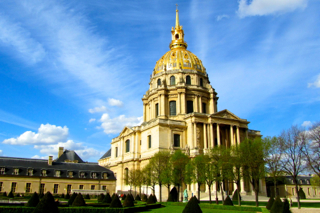
The Dome Church and the tomb of Napoleon (1706)
Hôtel des Invalides, 75007 Paris
Metro station: Invalides
Full price / reduced price: €12 / €10. Free for EU citizens under 26 years old (free for non-EU citizens under 18 years old)
A single ticket allows access to the Army Museum, the Church of the Dome (tomb of Napoleon I), the Charles de Gaulle Historic Museum (closed on Mondays), the Museum of Relief Maps and the Museum of the Order of the Liberation.
Open daily. April through October: 10 a.m. to 6 p.m. ; November through March: 10 a.m. to 5 p.m.
Audio guides available
Conceived by the greatest architects of the Palace, the Dome Church is a masterpiece of French classical architecture. For many, this is the most beautiful dome ever built in France.
On the exterior, in Doric and Corinthian styles, one can see the statues of Charlemagne and Saint Louis. Above them are represented Strength, Justice, Temperance and Prudence. Inside, the large mural painted in the dome represents Saint Louis handing his sword to Christ. A military mausoleum, it houses the tombs of military leaders, notably Napoleon Bonaparte (Napoleon I).
Church of Saint Louis of the Invalides
Esplanade des Invalides 129 rue de Grenelle, 75007 Paris
Metro station: Invalides
The Church of Saint-Louis of the Invalides houses the Tomb of Governors, where military leaders were laid to rest. Visitors will notice that here the vault is decorated with military trophies. The organ dates back to 1687.
Other museums
Other museums in the 7th District
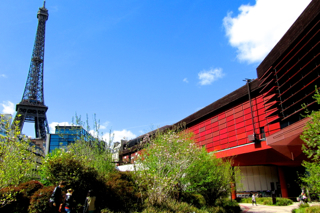
Quai Branly Museum
37 Quai Branly
, 75007 Paris
Website - tel : 01 56 61 70 00
Metro station : Pont de l’Alma
Price : full price/ reduced price: €10/ €7. Free for EU citizens under 26 years old (free for non-EU citizens under 18 years old). Free general entry the 1st Sunday of every month.
Combined ticket for the museum and the temporary exhibitions: full price/ reduced price : €12/ €9. Free for EU citizens under 26 years old (free for non-EU citizens under 18 years old).
Open every day
Monday, Tuesday, Wednesday and Sunday : 11 a.m. to 7 p.m. ; Thursday, Friday and Saturday : 11 a.m. to 9 p.m.
Guided tours available, full price/ reduced price: €8/ €6.
Audio guides for available (€5/ €3), as well as for those with hearing or vision impairment. Wheelchairs available for use.
For children: booklet games. Numerous educational activities for children and adults.
Restaurants, museum boutique and book store
Opened in 2006, the building was designed by Jean Nouvel, its bridge-shaped metal structure recalling the Eiffel Tower. From an architectural point of view, the beautiful 800 m² green wall, which faces the Seine is also impressive. Designed by Patrick Blanc and by the landscape architect Gilles Clément, this garden haven is perfect for taking a break from a museum visit.
The museum is dedicated to the arts and civilizations of Africa, Asia, Oceania and the Americas (Central and South). There are around 3,500 objects on display (merely one percent of the total collection!), and the exhibits are regularly renewed. Exceptionally rich, the museum’s collections are supplemented by thematic areas addressing different cultural heritages or existential questions raised by different civilizations.
The Quai Branly Museum opens its doors to the world and its cultures, so different and so rich, calling for reflection and an understanding for one another. The museum also hosts major international exhibitions.
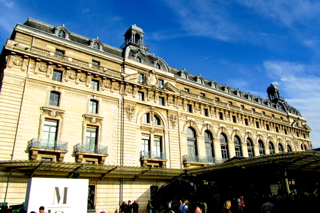
Musée d’Orsay
1 Rue de la Légion d'Honneur, 75007 Paris
Website - tel: 01 40 49 48 14
Metro station: Solferino
Price: museum and exhibitions, full price / reduced price: €14 / €11. Free for EU citizens under 26 years old (free for non-EU citizens under 18 years old). Free general admission on the first Sunday of each month.
Open daily except on Mondays: 9:30 a.m. to 6 p.m. ; Thursday: 9:30 a.m. to 9:45 p.m.
Guided tours (€6) and audio guides (€5) are available.
Also houses temporary exhibitions.
Workshops for children between 6 and 12 years old (€7).
A certified “Tourism and Handicap” location. Wheelchairs available for use.
This museum is housed in the beautiful Orsay train station, built in 1898 to accommodate visitors to the World’s Fair of 1900. Its collections include paintings and Western sculpture from 1848 to 1942. Its internationally renowned collection of Impressionist and Post-Impressionist paintings is the largest in the world. But more than the quantity is the quality of the masterpieces presented, which make it a must-see: "The Luncheon on the Grass" by Edouard Manet or "The Origin of the World" by Gustave Courbet, and many others. Other forms of artistic expression from this period are also presented (architecture, decorative arts, photography).
In The Surrounding Area
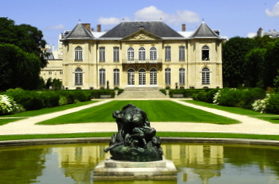
Rodin Museum (outside the perimeter of the World Heritage site)
Hôtel Biron, 77 rue de Varenne, 75007 Paris
Website - tel: 01 44 18 61 10
Metro station: Varenne or Invalides
Full price / reduced price : €12/ €9. Free for EU citizens under 26 years old (free for non-EU citizens under 18 years old)
Open daily except on Mondays : 10 a.m. to 6:30 p.m.
Audio-guide in 6 languages: €6.
Rodin, arguably the greatest sculptor of the 19th century, settled in this beautiful 18th-century mansion in 1908, which became a museum two years after his death, in 1917. Sculptures and drawings by the master are supplemented by paintings by his friends (Monet, Van Gogh, etc.). The peaceful park surrounding the museum is suitable for a quiet stroll.
The Palais Bourbon

Palais Bourbon, National Assembly (1728)
126 Rue de l'Université, 75007 Paris
Metro station : Assemblée Nationale.
The Palais Bourbon, a place of parliamentary life, has welcomed the National Assembly in its various forms since 1798. Italian in style, its name comes from the Duchess of Bourbon who owned the land on which the monument was built. After the death of the Duchess, vast expansion work was carried out: the courtyard was surrounded by buildings and extended west to the Hôtel Lassay. The façade consists of 12 columns, and was completed in 1810.
Guided visits only.

